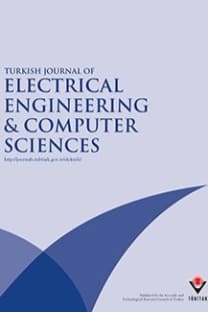Parameter identification of a separately excited dc motor via inverse problem methodology
Identification, inverse problem, optimization, separately excited dc motor, conjugate gradient method.
Parameter identification of a separately excited dc motor via inverse problem methodology
Identification, inverse problem, optimization, separately excited dc motor, conjugate gradient method.,
___
- A. Rubaai, R. Kotaru , “Online identiŞcation and control of a dc motor using learning adaptation of neural networks”, IEEE Trans. Ind. Applicat., vol. 36, pp. 935-942, May/June 2000.
- K. S. Narendra, K. Parthasorathy, “IdentiŞcation and control of dynamical systems using neural networks”, IEEE Trans.on Neural Networks, vol. 1, pp. 4-27, Mar., 1990.
- J.C. Basilio, M.V. Moreira , “state-space parameter identiŞcation in a second control laboratory”, IEEE Trans. on Education , vol. 47, pp. 204-210, May 2004.
- S. R. Bowes, A. Sevin¸c, D. Holliday, “New natural observer applied to speed-sensorless DC servo and induction motors”, IEEE Trans. On Ind. Electronics, vol. 51, pp. 1025-1032, Oct. 2004.
- S. Ichikawa, M. Tomita, S. Doki, S. Okuma, “Sensorless control of permanent-magnet synchronous motors using online identiŞcation based on system identiŞcation theory”, IEEE Trans. On Ind. Electronics, vol. 53, pp.363-372, April. 2006.
- Y. Favennec, V. Labb´e, Y. Tillier, and F. Bay, “IdentiŞcation of magnetic parameters by inverse analysis coupled with Şnite-element modelling”, IEEE Trans. Magn., Vol. 38, pp. 3607-3619, Nov. 2002.
- H. Y. Li, “Estimation of thermal properties in combined conduction and radiation”, International Journal of Heat and Mass Transfer, Vol. 42, pp. 565-572, 1999.
- J. Hadamard, Lecture on cauchy’s problem in linear partial differential equations, Yake University Press 1923.
- M. Pund’homme, T. Hung Nguyen, “Fourier analysis of conjugate gradient method applied to inverse heat conduc- tion problem”, International Journal of Heat and Mass Transfer, Vol. 42, pp. 4447-4460, 1999.
- H. M. Park, T. Y. Yoon, “Solution of the inverse radiation problem using a conjugate gradient method”, Interna- tional Journal of Heat and Mass Transfer, Vol. 43, pp. 1767-1776, 2000.
- L. Linhua, T. Heping, Y. Qizheng, “Inverse radiation problem in one-dimensional semitransparent plane-parallel media with opaque and specularly reflecting boundaries”, Journal of Quantative Spectroscopy and Radiative Transfer, Vol. 64, pp. 395-407, 2000.
- M. Enokizono, E. Kato, Y. Tsuchida, “Inverse analysis by boundary element method with singular value decompo- sition”, IEEE Trans. Magn., Vol. 32, pp. 1322-1325, May 1996.
- ISSN: 1300-0632
- Yayın Aralığı: Yılda 6 Sayı
- Yayıncı: TÜBİTAK
PCA based protection algorithm for transformer internal faults
Erdal KILIÇ, Okan ÖZGÖNENEL, Ömer USTA, Dave THOMAS
Polymorphic worm detection using strong token-pair signatures
Burak BAYOĞLU, İbrahim SOĞUKPINAR
An intelligent face features generation system from fingerprints
CDM based controller design for nonlinear heat exchanger process
Fatih DİKMEN, Yury Alexanderovich TUCHKIN
Parameter identification of a separately excited dc motor via inverse problem methodology
